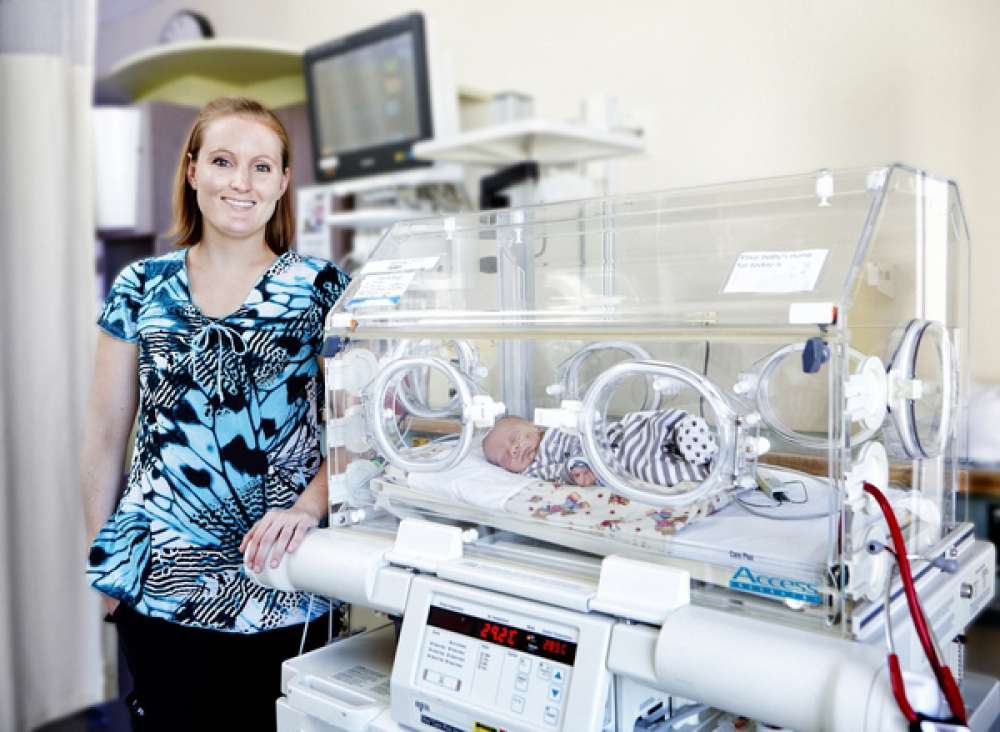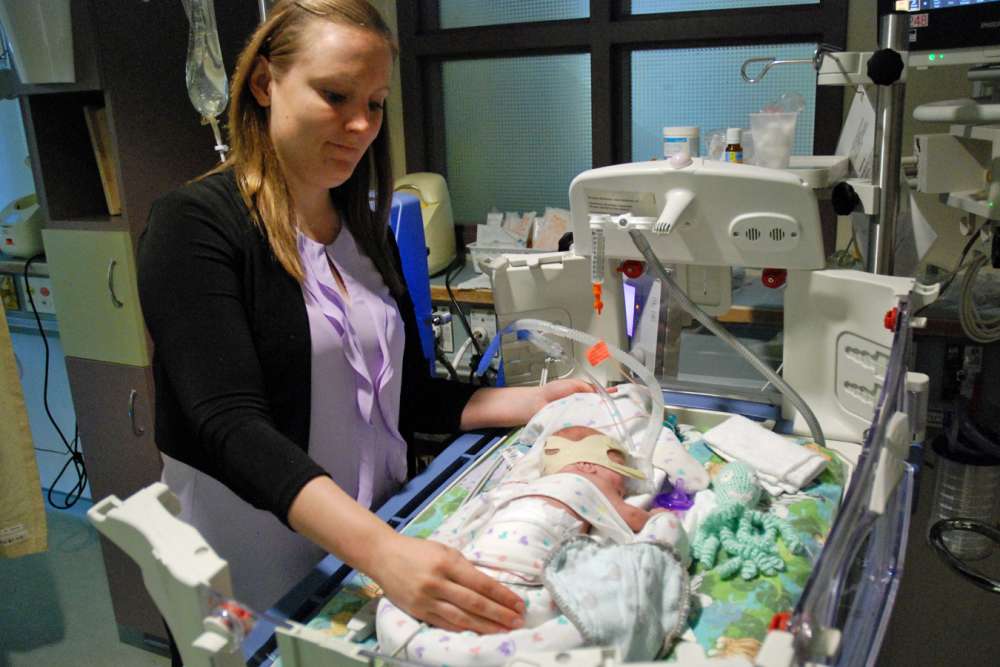Sleeping like a baby takes on a very different definition in Waterloo Regional Health Network’s neonatal intensive care unit (NICU).
The NICU supports more than 700 Waterloo Region babies a year who are born as early as 31 weeks gestation. For many of our smallest patients, their bodies may not have matured enough to sleep safely without extra support.
WRHN’s NICU care providers work very closely with families to tend to newborns, support infant development and make sure moms and dads know how to best support babies in safe sleeping when it’s time to go home.
The process is part of Waterloo Regional Health Network’s Best Practice Spotlight Organization designation with the Registered Nurses’ Association of Ontario (opens in a new tab). The hospital has turned to the best and latest education and evidence to support safe sleeping practices.

Jessica Socha is a registered nurse and education practice lead in WRHN’s children’s program. She offers more about why NICU care providers take safe sleep care and education so seriously…
Why do premature babies face particular sleep challenges?
Premature babies lack the neurological maturity necessary to maintain physiological flexion. This means that gravity often overwhelms their ability to maintain their arms and legs close to their body or their head in neutral alignment.
This can result in a positional obstruction which may lead to difficulty in breathing and changes in their ability to maintain their heart rate and oxygen saturations.
What are some of the most common challenges?
One of the challenges that we face is providing parents with information about safe sleep at home, while having to model different supportive techniques in the hospital while their premature baby is still growing and developing.
We counsel parents that the sleep practices modelled during the early days of their NICU stay are safe for their baby. Staff members are there to watch them 24/7 and vital signs are continuously monitored.
When a baby is in NICU, how do care providers help manage a baby’s sleep?
In the NICU, premature babies are supported using positioning aides which help to maintain their head, neck and extremities in neutral alignment.
This positioning helps their neuro-motor skills to mature, provides comfort, induces sleep and maintains an open airway.
Premature babies may need help to maintain their temperature. We support this with swaddling or the addition of light blankets when they transition from an incubator to a cot.
When a family goes home, what’s involved in transitioning the baby for safe sleep?
While we begin safe sleep education on admission to the NICU, we start to transition premature babies towards these practices around 35 weeks’ gestation. It is at this gestation that premature babies are generally able to maintain their positioning and temperature without the support of positioning aides and additional layers of blankets.

We help families understand that the safest place for their baby to sleep is on their back in a crib or bassinette without additional toys, pillows or bumper pads, with the baby dressed in a light sleeper.
What do parents worry about the most, and how do you help them?
Parents worry the most about not having the reassurance of the vital signs monitors that we use in the NICU. We always encourage parents to look at their baby and not at the monitor so that they can learn to trust their assessment and care of their baby.
We have a Care by Parent room in the NICU where families preparing for the transition to home can spend a night away from the monitors, but are still close to staff if they have questions.


